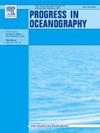Are winter conditions impacting annual organic production in the northern Adriatic? Verifications and future projections
Abstract
Primary production in the northern Adriatic (NAd) reaches its yearly peak in the winter with high-intensity variations from year to year. According to the hypothesis, the intensity of local winter primary production, controlled by the degree of the spreading of Po River waters across the NAd, reflects on the annual secondary production of the ongoing year. The hypothesis is evaluated here based on the new data set and extends from 2018 to 2020, referring additionally to 2017 data which are already published. Data collected in 2017 and 2020 support the hypothesis, pointing to the large organic outputs after highly productive winters. Despite the lack of seasonal data for 2018 and 2019, large annual production was deducted by large abundances of the allochthonous gelatinous zooplankton species – Mnemiopsis leidyi. Numerical models show that in 2018–2020 the NAd was mostly “separated” from the rest of the Adriatic Sea by a northern branch of a large cyclonic gyre with high salinity water (from central Adriatic and/or Kvarner Bay) entering the NAd along the eastern (Istrian) coast. Such a circulation system could favour the spreading of the Po River waters across the NAd, inducing high primary production in winter, at the beginning of the yearly pelagic cycle, with a subsequent retention/accumulation of organic matter produced in the following months in the area. Using climate projections of temperature and salinity and the associated circulation and following the observed biological relations, a prediction of the organic matter production in the NAd can be obtained. With increased horizontal density gradients in future winters, an intensification of transversal motions across the NAd is expected. Thus, the retention of the Po waters with higher winter production in the NAd may be predicted. Following the hypothesis, a higher annual organic production and a probable higher occurrence of gelatinous plankton in the east of the NAd are expected.

 求助内容:
求助内容: 应助结果提醒方式:
应助结果提醒方式:


